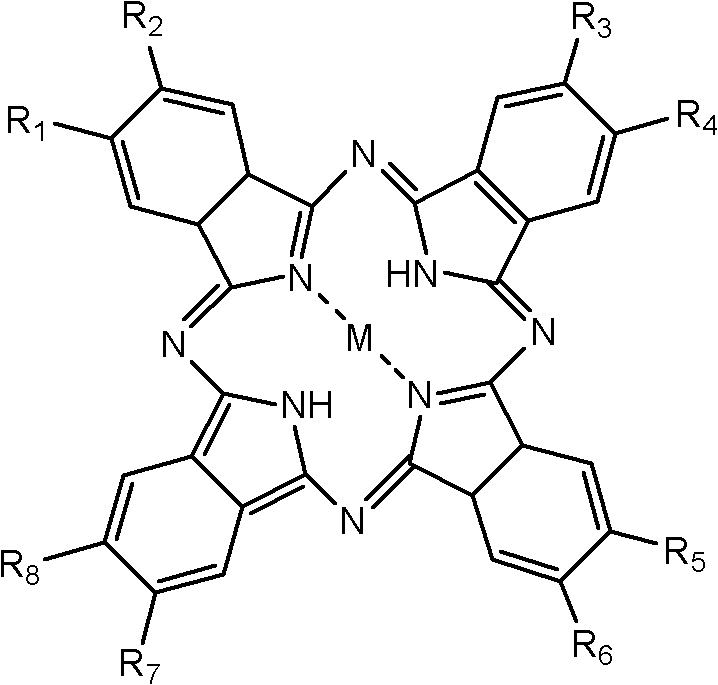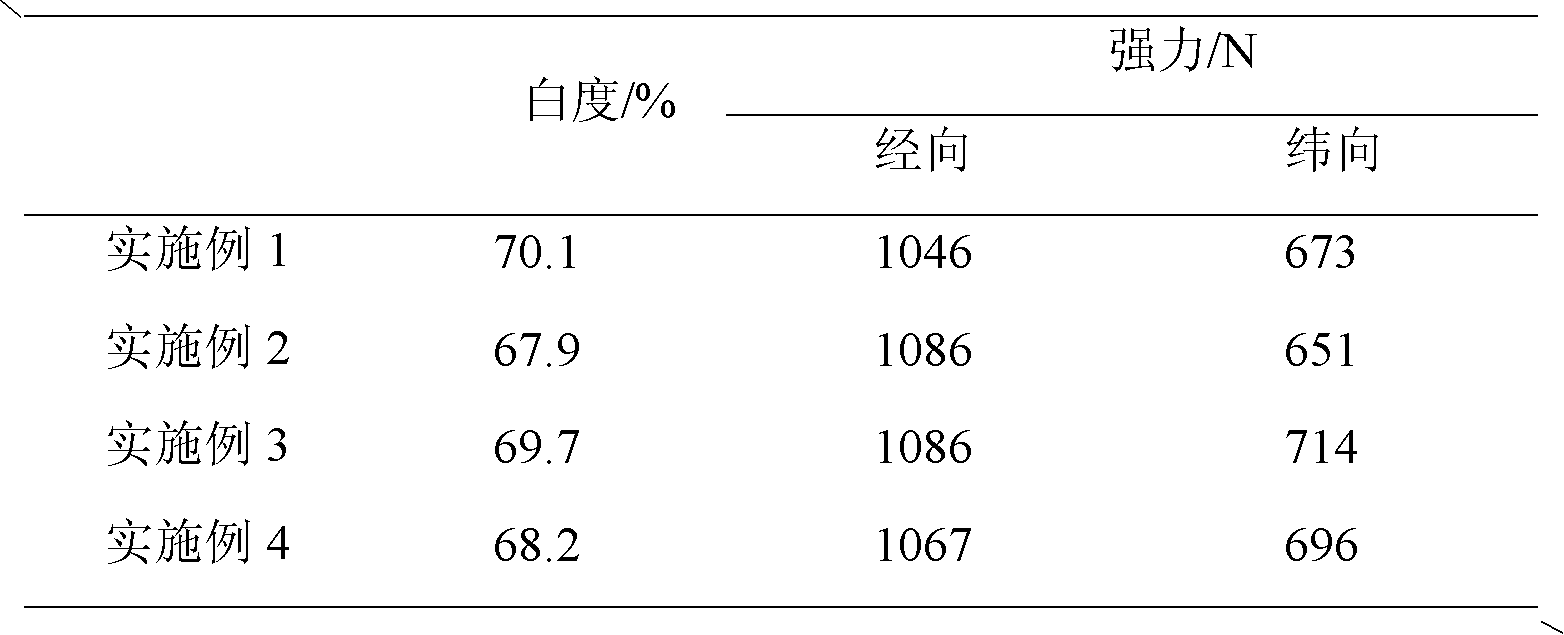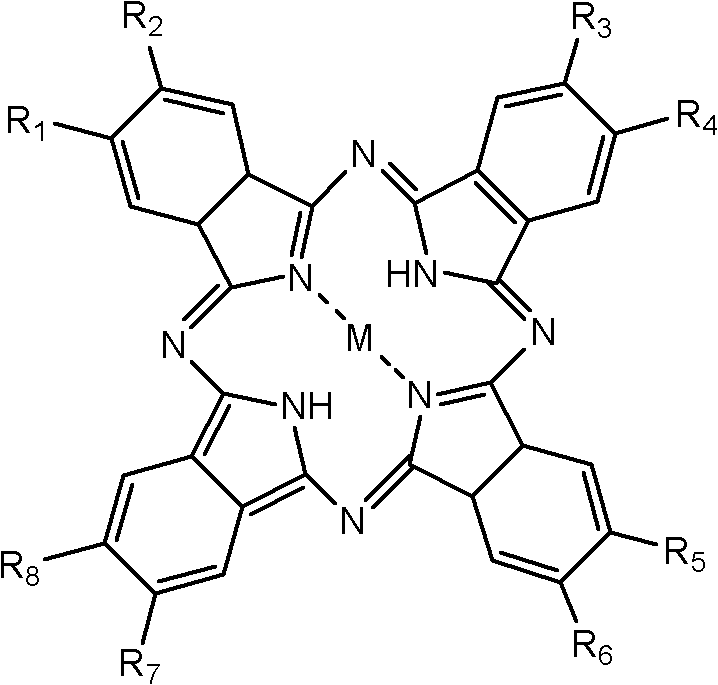Low-temperature activation bleaching method by using water-soluble metal phthalocyanine
A metal phthalocyanine, low-temperature activation technology, applied in the field of low-temperature activation and bleaching, can solve the problems of immature application, difficult penetration, low production efficiency, etc., and achieve the effect of reducing the pH of the working solution and shortening the stacking time.
- Summary
- Abstract
- Description
- Claims
- Application Information
AI Technical Summary
Problems solved by technology
Method used
Image
Examples
Embodiment 1
[0036] (1) Preparation of bleach working solution: 30% H 2 o 2 Dosage: 30g / L; Cobalt Tetracarboxyphthalocyanine: 1μmol / L; Penetrant JFC Dosage: 2g / L; Stabilizer XFA Dosage: 2g / L; NaOH is used to adjust the pH of the working solution to 7.
[0037] (2) Padding step: the pure cotton semi-bleached cloth is soaked and rolled twice in a uniform padding machine with the working solution prepared in the above (1), and the liquid-carrying rate is 95%.
[0038] (3) Steaming step: the steaming temperature is 80° C., and the steaming time is 1 hour.
[0039] (4) Water washing: wash the above-mentioned steamed cotton fabric twice with hot water at 50° C. to 80° C., and then fully wash it with cold water.
Embodiment 2
[0041] (1) Preparation of bleach working solution: 30% H 2 o 2 Dosage: 30g / L; cobalt tetracarboxyphthalocyanine: 15μmol / L; penetrant JFC dosage: 2g / L; stabilizer XFA dosage: 1g / L; use NaOH to adjust the pH of the working solution to 10.
[0042] (2) Padding step: the pure cotton semi-bleached cloth is soaked and rolled twice in a uniform padding machine with the working solution prepared in the above (1), and the liquid-carrying rate is 95%.
[0043] (3) Steaming step: the steaming temperature is 80° C., and the steaming time is 1 hour.
[0044] (4) Water washing: wash the above-mentioned steamed cotton fabric twice with hot water at 50° C. to 80° C., and then fully wash it with cold water.
Embodiment 3
[0046] (1) Preparation of bleach working solution: 30% H 2 o 2 Dosage: 30g / L; cobalt tetracarboxyphthalocyanine: 15μmol / L; penetrant JFC dosage: 2g / L; stabilizer MA-AA dosage: 1g / L;
[0047] (2) Padding step: the pure cotton semi-bleached cloth is soaked and rolled twice in a uniform padding machine with the working solution prepared in the above (1), and the liquid-carrying rate is 95%.
[0048] (3) Steaming step: the steaming temperature is 80° C., and the steaming time is 1.5 hours.
[0049] (4) Water washing: wash the above-mentioned steamed cotton fabric twice with hot water at 50° C. to 80° C., and then fully wash it with cold water.
PUM
 Login to View More
Login to View More Abstract
Description
Claims
Application Information
 Login to View More
Login to View More - R&D
- Intellectual Property
- Life Sciences
- Materials
- Tech Scout
- Unparalleled Data Quality
- Higher Quality Content
- 60% Fewer Hallucinations
Browse by: Latest US Patents, China's latest patents, Technical Efficacy Thesaurus, Application Domain, Technology Topic, Popular Technical Reports.
© 2025 PatSnap. All rights reserved.Legal|Privacy policy|Modern Slavery Act Transparency Statement|Sitemap|About US| Contact US: help@patsnap.com



